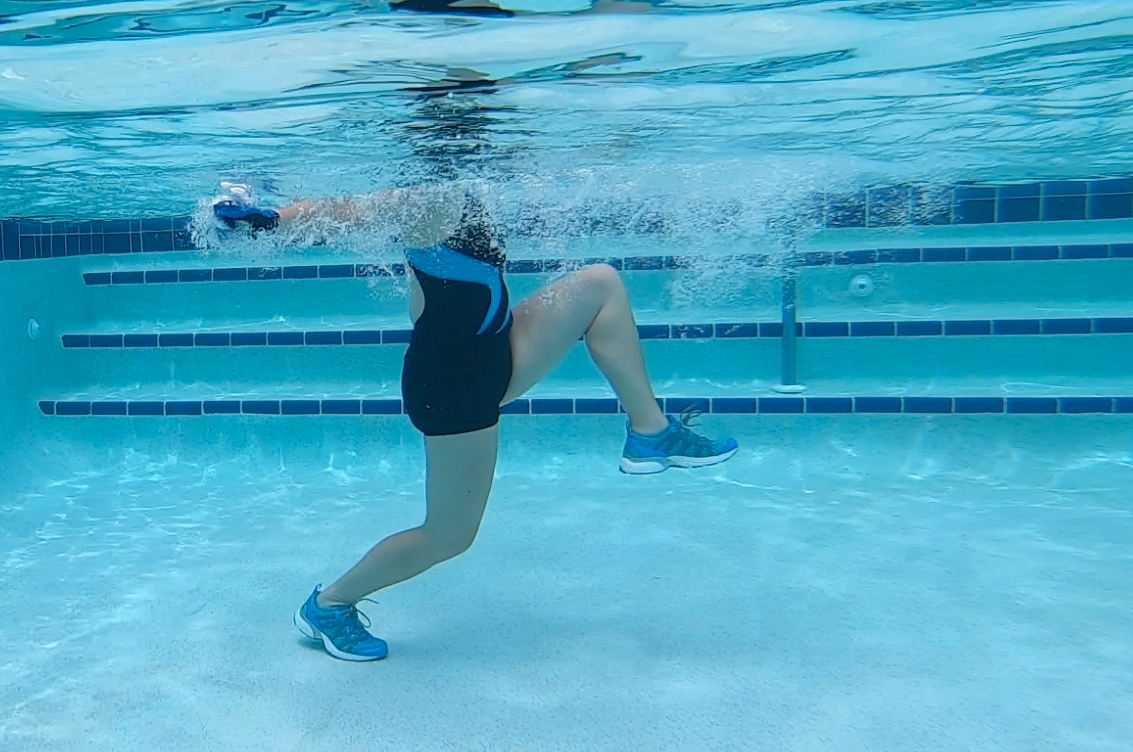“What’s the difference?” I hear you ask. Water aerobics and water exercise seem interchangeable; basically the same thing. But what if I told you the former won’t help you reach your goals, but the latter will?
While it didn’t gain popularity until the 1980s, the term water aerobics was developed a decade earlier to describe a type of exercise that improved cardiovascular health. We’ve got Jane Fonda’s exercise videos to thank for taking the movement viral.
Perhaps the most motivational instructor of her time, Jane Fonda believed exercise should be taken seriously. One of her famous quotes is that namby-pamby little routines that don’t elevate your heartbeat or make you sweat aren’t worth your while.
Aerobics v Water Exercise

What is aerobics?
The term ‘aerobics’ was developed by Dr. Kenneth Cooper, an exercise physiologist whose research and education center (the Cooper Institute) was devoted to preventative medicine. His point system to improve cardiovascular health led to aerobics being a widely recognized form of exercise in the late 70s.
Aerobic exercise refers to physical activity that requires oxygen for fuel. It’s typically performed at a moderate intensity over a relatively long period of time. For example, walking or jogging for a long distance at a moderate intensity is an aerobic activity. When exercising in the pool, doing any combination of whole body exercises at a moderate intensity is aerobic, targeting cardiovascular health.
On the other hand, anaerobic exercise is activity that doesn’t require oxygen for fuel. This type of movement is hugely important to improve strength, balance, and even to lose weight. We can think of anaerobic as our first responder; it provides immediate available energy anytime we start an activity—important for fast, strong, powerful movements—and is sustained for about two minutes before our body shifts to oxygen for power.
These type of exercises prepare us to walk up a flight of stairs, lift a bag of groceries, or for leisure activities like golf or tennis that require brief bursts of activity.
Aerobic and anaerobic differ by the duration and the intensity and how energy is generated.
What is water exercise?
Most participants come to water exercise because it’s easy on the joints and offers the opportunity to improve more than just cardio. In fact, many participants claim their top reasons for joining water exercise classes are to increase core strength, lose weight, and improve balance. Aerobic workouts on their own will not achieve these goals, but we need to tap into both aerobic and anaerobic if we want to see results.
Water offers an ideal training environment to do both aerobic and anaerobic exercises to improve all health, fitness, and performance goals. All you need is the right mix of intensity and duration to effectively employ both the aerobic and anaerobic energy systems and be on the fast track to results.
Goodbye water aerobics, hello water exercise
It’s time to change public perception of water workouts. Sure, aerobics is part of what we do, but it’s so much more. A water-based workout designed to hit both aerobic and anaerobic energy systems will improve strength, endurance, cardio, and balance. Even top competitive athletes use the pool for low-impact cross training.
Most fitness participants who work out in the water on a regular basis will tell you how much better they feel, how much they’ve improved their overall fitness, and how difficult it would be to replicate these results with only land-based exercise.
Want to get serious about working out? Take off your leg warmers, slip into your swimsuit, and jump into water exercise; it’s for everyone. Join me inside Wavemakers here, where it’s my mission to get you your best results in less time and with more joy.
